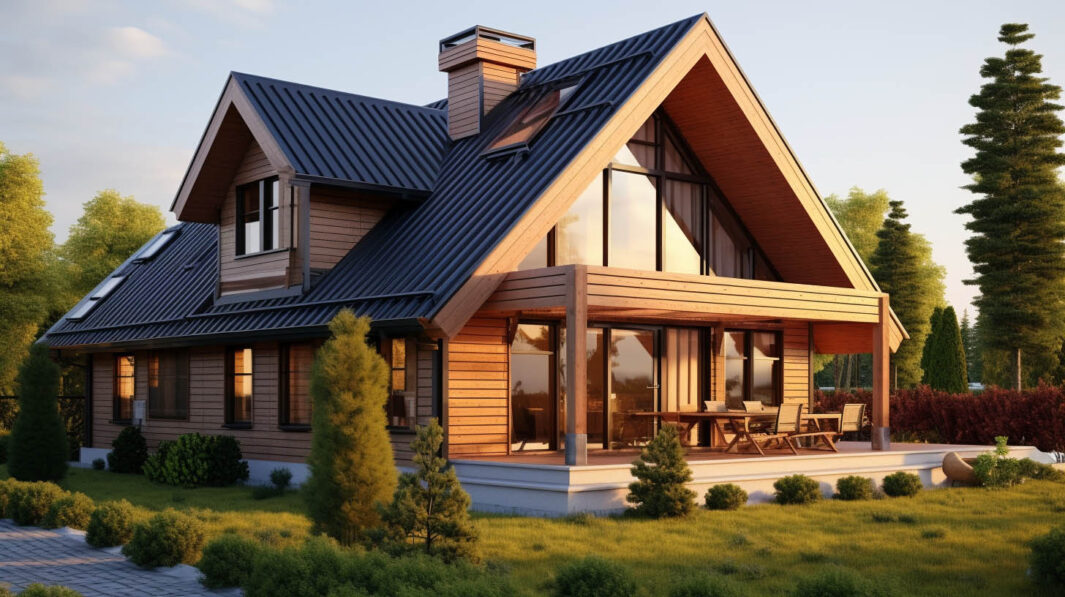The slope or gradient of a roof, commonly referred to as the roof pitch, is an often overlooked yet vital component of a home’s architecture. Its significance extends beyond mere aesthetics, influencing a myriad of factors from water runoff to energy conservation. Let’s delve deeper into the intricacies of roof pitch and its paramount importance.
The Undeniable Significance of Roof Slope
The gradient of a roof is not just a design choice; it’s a strategic decision that affects the home’s functionality. A well-calibrated pitch ensures:
- Water and Debris Flow: A roof without the right incline can lead to water pooling, increasing the risk of leaks and structural wear. In snow-prone areas, the angle of the roof determines snow buildup, with flatter surfaces accumulating more.
- Optimized Attic Space: A pronounced roof pitch can unlock additional attic space, potentially transforming it into a functional area or storage zone.
- Material Quantities: The steeper the incline, the more construction materials it demands, which can influence the overall budget.
- Enhanced Energy Conservation: A roof with the right pitch promotes natural airflow, optimizing the home’s insulation and reducing energy wastage.
- Durability Against Winds: A roof with around a 30% incline is observed to offer superior resistance to strong winds, enhancing its longevity.
- Extended Roof Life: Steep pitches ensure efficient runoff of rain, snow, and organic debris, reducing wear and tear and extending the life of roofing materials.
- Safety and Maintenance: Steeper roofs might pose challenges during maintenance, necessitating specialized equipment and safety measures.
Deciphering the Ideal Roof Pitch
While the international building norm suggests a 1/4:12 pitch, meaning a 1/4 inch rise for every 12 inches of horizontal span, local regulations might differ. It’s imperative to align with local building codes to ensure your roof’s compliance.
Calculating Roof Pitch: A Simplified Approach
Whether you’re assessing an architectural blueprint or an existing structure, determining the roof pitch follows a systematic method:
- For Blueprints: Utilize a protractor to gauge the roof’s angular measurement, subsequently converting this angle to a proportionate ratio.
- For Established Structures:
- Ascertain the roof’s horizontal span or run, from its edge to the midpoint, in inches.
- Gauge the vertical elevation or rise from the base to the apex in inches.
- The ratio of rise to run, when multiplied by 12, provides the roof’s pitch ratio.
For example, a roof with a three-foot rise and a run spanning nine-and-a-half feet would translate to a pitch ratio close to 3.79:12.
Tailoring Your Roofing Choices
Your roof’s gradient is a defining factor in its performance, resilience, and visual appeal. When contemplating roofing alterations or material selections, the pitch plays a pivotal role. Engaging with a seasoned roofing company, such as Home Evolution, can offer bespoke solutions suited to your home’s unique requirements. Whether you’re scouting for roofing companies in Albany NY or require specialized roof repair services in Albany NY, Home Evolution stands as a beacon of expertise and reliability.
In summation
The pitch of your roof is a cornerstone of its structural integrity and overall efficiency. Whether you’re erecting a new dwelling or contemplating renovations, the roof pitch deserves meticulous attention and consideration.

